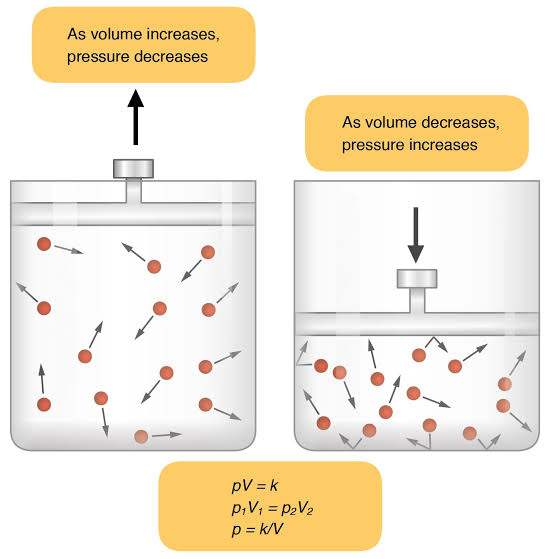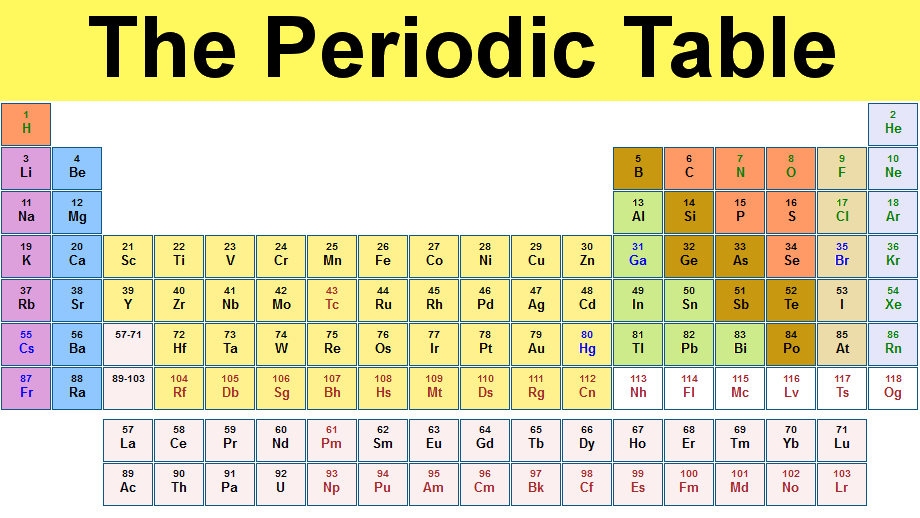Topics in Chemistry
Gas laws in chemistry Charles's law explained Calculation questions on Charles's law Examples of Charles's law in real life Boyle's law explained Calculation questions on Boyle's law Examples of Boyle's law in real life Summary on the kinetic molecular theory of gases Postulates of kinetic theory of gases Avogadro's number explained with worked examples Mole and Avogadro's Number explained Le Chatelier's Principle: Changes in concentration and pressure in dynamic equilibrium Chemical Equilibrium: Dynamic Equilibrium in Chemistry Static and Dynamic Equilibrium explained with their differences Chemistry Scheme of Work, SS1, First Term Chemistry Scheme of Work, SS1, Second Term Chemistry Scheme of Work, SS1, Third Term Compounds in Chemistry: Characteristics of Compounds Types of Mixture: Homogenous and Heterogeneous Mixtures What are mixtures? Characteristics of mixturesAcademic Questions in Chemistry
With regards to redox reactions, which of the following statement is wrong?
A. Redox reaction are examples of chemical change
B. Reduction is the gain of electron
C. Substances that donates election during chemical reaction are termed reductants
D. Oxidizing agents are always reduced in chemical reactions
E. Oxidation occurs at the cathode in electrolysis
F. Hydrogen is a reducing agent
In chemistry, physical change is associated only with the rearrangement of molecules while the internal composition of the substance remains the same.
A. True
B. False
_____ electron(s) is a term that describes the number of electron(s) in the outermost shell of an atom.
A. Outer
B. Excess
C. Valence
D. Positive
E. Negative
F. Last
_____ is the negative electrode in electrolysis.
A. Anode
B. Anion
C. Cathode
D. Cation
E. Ion
F. Electrolyte

The above diagram shows the _____ type of bond.
A. Covalent
B. Polar covalent
C. Coordinate covalent
D. Metallic
E. Van dear walls
F. Ionic
Metals are referred to as _____ in their impure state.
A. Diluted
B. Consecrated
C. Coloured
D. Ores
E. Stained
F. Strained
Metals generally have the quality to shine, glow, sparkle, glitter, reflect light and be polished. This characteristic of metals is termed _____.
A. State
B. Ductility
C. Luster
D. Malleability
E. Hardness
F. Inflorescence
The _____ spectrometry experiment conducted on isotopic elements gave a confirmation for the existence of isotopes.
A. Mole
B. Volume
C. Weight
D. Number of moles
E. Mass
F. Amount of substance
Robert Boyle (1627-1691) is an English scientist who worked on confined gases in an attempt to discover the relationship between their pressure and volume at a constant temperature. During his work, he discovered that whenever he doubled the pressure of the gas, its volume decreases by the same amount.
According to Boyle's experiment, there is always an inverse relationship between the pressure and volume of a confined gas at a constant temperature. With regards to this inverse relationship, whenever the pressure increases, the volume decreases proportionately, and when volume increases, the pressure decreases by a similar amount.
Please the introduction to gas laws in chemistry here.
A graphical representation of Boyle's law is typically seen as a curve. This curve is called the PV (Pressure-Volume) curve, and it is hyperbolic in nature. It shows the relationship between the pressure of a gas and its volume at a constant temperature.
Below is a pressure-volume curve:

You can read on Le Chatelier's principle and dynamic equilibrium here.
From the above curve, notice that as the pressure decreases, the volume increases proportionately. This also implies that an increase in volume will result into a decrease in pressure. In this regard, the pressure and volume of a gas are always inversely proportional. Therefore, when one increases, the other must decrease according to Boyle's law.

Please on gaseous state of matter and their characteristics here.
The above image shows the volume of equal amount of a gas in different containers. You will observe that the gas within the first container has a lower pressure due to the container's large volume. For this reason, collision of gas molecules with the walls of the container and with the one another will be slower.
In this second container, the volume of gas was reduced by lowering the cork. This resulted into an increased pressure of gas within that container. Therefore, the gas molecules will collide more rapidly with themselves and the walls of the container.
Please read more on the kinetic theory of gases here.
Boyle's law states that the volume of a given mass of gas is inversely proportional to its pressure provided the temperature is remains constant. This law was formulated in 1662.
PV = K
Boyle's law is often referred to as Boyle–Mariotte law. In France, it is popularly referred to as Mariotte's law. The French physicist, Edme Mariotte (1620–1684) discovered the pressure-volume relationship in 1679.
Although, Boyle published his work in 1662, Mariotte made her discovery independently of Boyle. However, Mariotte further found out that the volume of air also changes with temperature.
The formula of importance for Boyle's law is:
PV = k
Where P = Pressure and V = Volume
The k is a constant for a given sample of gas. It is dependent on the mass of the gas and its temperature.
You can read on Avogadro's number explained with worked examples here.
The formula for Boyle's law is often applied in solving questions involving the pressure or volume of a system at constant temperature. The formula is expanded below:
PV = k
P1V1 = P2V2
P1 = Initial Pressure
V1 = Initial Volume
P2 = Final Pressure
V2 = Final Volume
Please see worked calculations on Boyle's law here.
To further explain Boyle's law, recall that gas molecules exhibit random motion in a straight line since their particles are widely separated as a result of neglible cohesive forces between them. Therefore, increasing the pressure within the gas molecules pushes the molecules closer together, thus increasing their cohesive forces, and decreasing their occupied volume. If the pressure within the gas molecules are reduced, their occupied volume increases, and the gas will escape if an external outlet is present on the container. This instance is seen in aerosols and fire extinguishers.
Please read a detailed explanation on various examples of Boyle's law here.
Other instances of Boyle's law in real life include the following:
Breathing in humans
Inflating and deflating car tyres
Skuba diving
Opening a bottle of soda
Use of a syringe
Filling of balloons
Deep-sea fishes
Storage of gas
Kindly share this article via the links below:

Please click here to contact Alfred if you require any of the following services:
If you need a standard website at an affordable price.
Online training on the academic subjects: biology, chemistry and basic science.
If you require an advanced smart school management system (web application) for your school.
Click here to read on Len Academy Smart School Software.
Please click here to follow Len Academy on Google News.
Amazing facts in Chemistry
Plastic and Glass can decompose, but not in our lifetimes. It takes an average time of 450 years for plastics to decompose. As for the decomposition of glasses, it takes about 4,000 years
The only letters that failed to appear on the periodic table are letters:
Gold and copper are the only two non-silvery colored metals.
Copper is the only metal that is naturally antibacterial. For this reason, some children utilize 'copper water bottles' in schools
Water freezes faster when it’s warm than when it’s cold
Most element in their pure state exists physically in different forms. For instance, pure carbon can exist as both diamond and graphite. This phenomenon is called allotropy
If you pour a handful of salt into a full glass of water, the water level will go down rather than overflowing the glass.
Similarly, if you mix half liter of water and half litre of alcohol, the total volume of the liquid will be les than one litre
Notable points in Chemistry
Below are the physical properties of metals:
They exist in solid state.
The have high densities.
They are good conductors of heat and electricity.
The have the ability to be polished, to glow, sparkle and reflect light.
They can be bent, flattened and made into sheets called foils.
They can be drawn into wires.
Iron undergoes magnetism while most metals are poorly magnetized.
They typical have high melting point.
They generally have high boiling point.
With the exception of lithium, sodium and potassium, most metals are generally hard.
They have the ability to make sound when in contact with other objects or metals.
Please read details on the physical properties of metals here
John Dalton is an English chemist who brought clarity into the composition of matter and the basis for their chemical reactions.
Below are Dalton's Atomic Theory:
All matter consists of tiny indivisible particles called atoms.
Atoms of the same element are identical to each other in every aspect because they have the same shape and mass, while atoms of different elements are different in all respect.
Atoms are indestructible and can neither be created nor destroyed.
Atoms of different elements can combine with each other in simple whole number ratios to form compounds.
Atoms of the same element share similar physical and chemical properties. They can also combine in more than one ratio to form two or more compounds.
Meanwhile, understand that the above theories of John Dalton had been modified.
Please read on Dalton's atomic theory and its modifications here

The periodic table, also called periodic table of elements or Mendeleev's table, is a table that shows an organized arrangement of the 118 chemical elements according to their atomic number.
Out of the 118 elements; elements 1 - 94 are present in nature while elements 95 - 118 are synthesized artificially.
The manner at which elements are arranged on this table reveals some similarities in their electronic configurations and chemical properties.
A compound composed of iron (Fe) and oxygen (O) was analyzed and found to contain 69.94% iron and 30.06% oxygen. Find the empirical formula of the compound. (Molar mass of Fe=55.85, O=16)
Step 1: Identify the given parameter from the question.
Fe = 69.94%, O = 30.06%.
Empirical formula = Fe?O?
Step 2: Convert the percentages to gram. (just attribute grams to the %).
Step 3: To get the mole ratio of each element, convert the gram to moles using the formula (mole = mass/molarmass). Please merorize this formula because we always work with moles in emperical formula.
Mole of Fe: 69.94/55.85 = 1.252mol
Mole of O: 30.06/16 = 1.879mol
Step 4: Divide both sides by the smallest mole ratio.
Iron has the smallest mole ratio in our case, therefore: 1.252/1.252 = 1, 1.879/1.252 = 1.5
We now have the formula = Fe1O1.5
Step 5: Multiply each of the moles by the smallest whole number that will convert each into a whole number. (In our case, the number '2' is the smallest whole number that will make '1.5' and '1' whole numbers when multiplied by it.
For iron (Fe), we will have 1 x 2 = 2
For oxygen (O), we will have 1.5 x 2 = 3
Step 6: Write the empirical formula.
The empirical formula= Fe2O3
Iron(III)tetraoxosulphate(VI)
In chemistry, hydrocarbons can be classified as either aliphatic or aromatic. Recently, both classifications of hydrocarbon were based on their structure rather than their origin.
Aliphatic hydrocarbons are put into three main groups according to the types of bonds they possess. These are:
Alkanes
Alkenes
Alkynes
They are shown in the image below:

It's important to note the followings:
Alkanes have single bonds (only) in their structures.
Alkenes always have a carbon-carbon double bond present in their structure.
Alkynes always have a carbon-carbon triple bond present in their structure.
Aromatic hydrocarbons are classified into:
